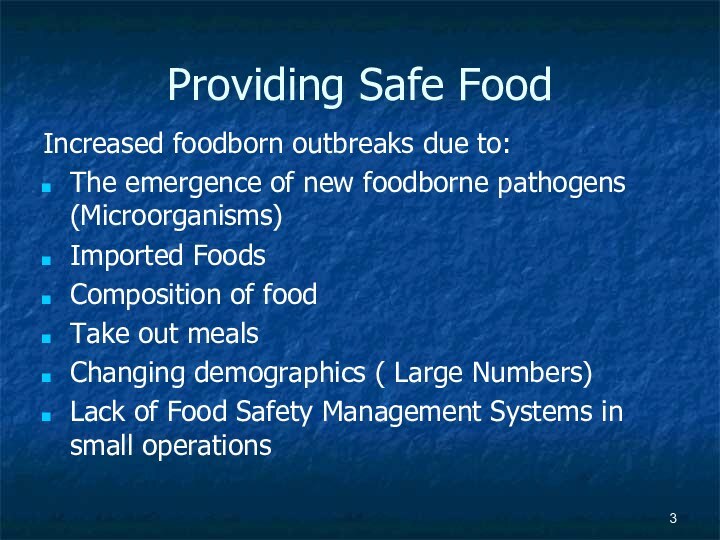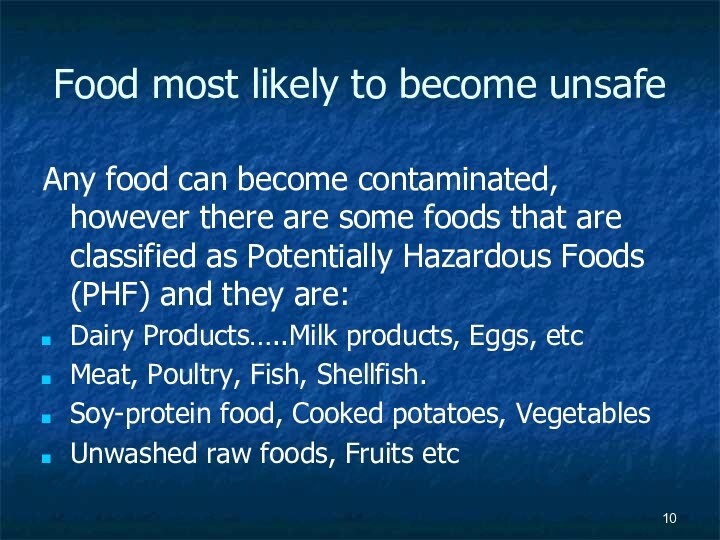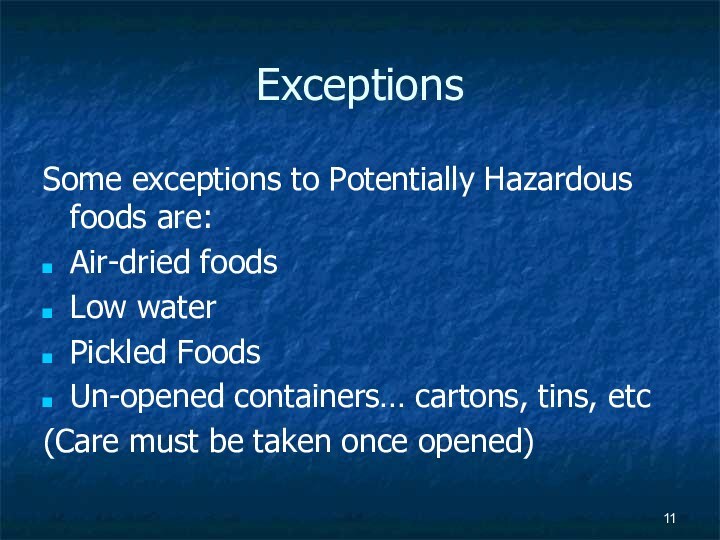Слайд 2
Dangers of Foodborne Illness
A foodborne illness is a
disease carried or transmitted to people by food
Foodborn illness
outbreak is defined as:
“2 or more people experience the same illness after eating the same food”
Most common causes are failure to :
Cook or Cool, or Hold at the proper temp
Слайд 3
Providing Safe Food
Increased foodborn outbreaks due to:
The
emergence of new foodborne pathogens (Microorganisms)
Imported Foods
Composition
of food
Take out meals
Changing demographics ( Large Numbers)
Lack of Food Safety Management Systems in small operations
Слайд 4
Cost of Foodborne Illness
The cost to a food
establishment can be very large and can include the
following:
A Lawyer
Court fees
Testing of food samples
Bad publicity… loss of customers & sales
Prestige & Reputation
Слайд 5
The benefits of a FSMS
A Food Safety Management
System ensures that you can :
Offer a defense against
a Lawsuit
Protect your Customers & Staff
Higher profits & better service
Better food quality
Lower food costs due to less waste
Слайд 6
Preventing Foodborne Illness
In order to prevent foodborne illness
you should be aware of the 3 ways in
which food could effect people
Biological… Bacteria, Viruses, Parasites
Chemical… Cleaning products, polishes
Physical… Pieces of debris
Слайд 7
Training Employees in Food Safety
A manager’s responsibility is
to ensure that the Food Safety Principles are practiced
by everyone.
All Employees must be properly trained :
Programs for both new and current employees
Ongoing food safety training for everyone
Appropriate training materials
Records documenting employees training
Слайд 8
Food Safety Management System
A ( FSMS ) will
help to prevent foodborne illness by controlling hazards throughout
the flow of food, and should incorporate the Hazard Analysis Critical Control Points ( HACCP ) principles.
FLOW OF FOOD
Purchasing, Receiving, Storing, Preparing, Cooking, Holding, Cooling, Reheating, Serving.
Слайд 9
People at high risk
The demographics of the population
in developed countries show an increase in the percentage
of people at high risk and they include :
Infants and preschool-age children
Pregnant women
Elderly & People taking medication
People with terminal diseases (cancer, HIV)
Слайд 10
Food most likely to become unsafe
Any food can
become contaminated, however there are some foods that are
classified as Potentially Hazardous Foods (PHF) and they are:
Dairy Products…..Milk products, Eggs, etc
Meat, Poultry, Fish, Shellfish.
Soy-protein food, Cooked potatoes, Vegetables
Unwashed raw foods, Fruits etc
Слайд 11
Exceptions
Some exceptions to Potentially Hazardous foods are:
Air-dried
foods
Low water
Pickled Foods
Un-opened containers… cartons, tins, etc
(Care
must be taken once opened)
Слайд 12
How food becomes unsafe
Common factors that are responsible
for foodborne illness outbreaks are :
Purchasing food from unsafe
sources
Failing to cook food adequately
Holding food at improper temperatures
Using contaminated equipment
Poor personal hygiene










































